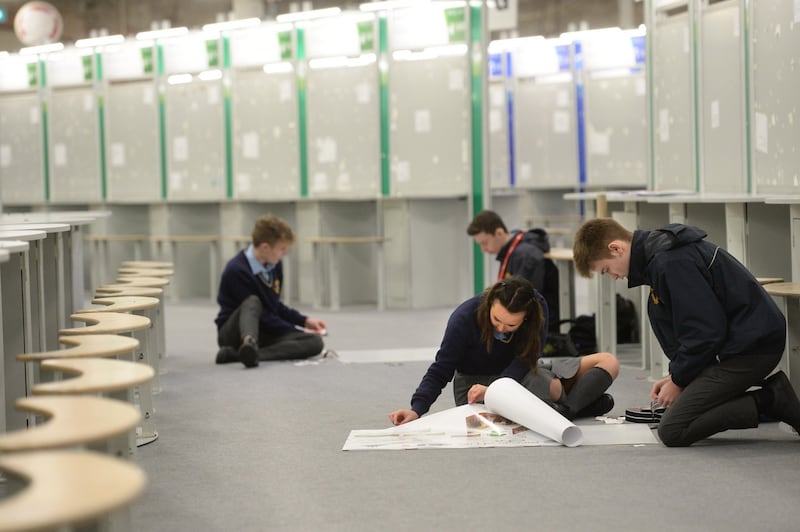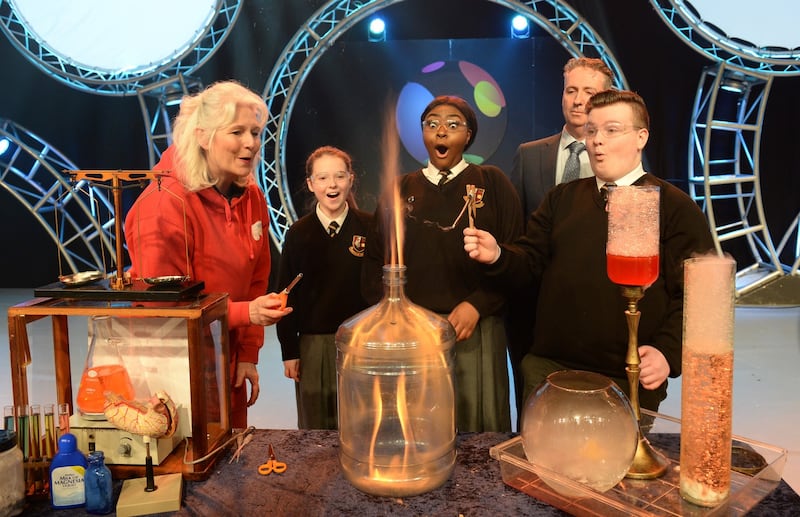A small army of volunteers, including 81 judges, former winners and transition year students giving up their time, are pivotal to the staging of the BT Young Scientist & Technology Exhibition.
In that mix too are hundreds of teachers whose input goes far beyond the classroom or school laboratory.
Without such commitment, the staging of the exhibition would be impossible, according to Mari Cahalane, head organiser of the exhibition.
“Quite frankly, we couldn’t do it without the volunteers.”
Moreover, she adds, it best reflects the ethos of the event staged annually at the RDS.
Up to 200 staff from sponsor BT, known as “red coats”, participate on a voluntary basis. Their ranks are boosted by 15 transition year students. Their work includes reassuring nervous students that judges are humans too.

Giving back
Typical of that cohort is Claire Hanrahan, who helps co-ordinate eight panels of judges, who embark on exhaustive evaluations of projects over three days. She has been a volunteer for most of the past 19 years.
“I love it. It’s the highlight of our working calendar; the one thing that stops us being depressed coming back to work after Christmas,” she says.
A sense of giving back, Hanrahan says, is obvious in the way that past winners come back as mature scientists to help out.
John Monahan, who won the the first young scientist competition in 1965, has been a judge for many years. This year, eight alumni will judge the Primary Science Fair, a competition for younger students that runs in parallel.
Network engineer Dan Selfridge, who has a team of up to 10 volunteers, is responsible for installing an IT network at the venue; a role he has been filling over the past 17 years.
Science is not just about spectacular explosions. It's about real life too
What he likes about it is the mucking in to ensure everything is done. He is always impressed by the maturity of students and the quality of their projects, “a lot of which are above my head”.
For Gemma Buick, a chemistry and maths teacher at Pobalscoil Neasáin in Baldoyle, Co Dublin, it's a week-long commitment – minding and encouraging students who have qualified to exhibit their work.
This year, she has three projects on show “ranging from enzymes in pineapples to microplastics in teabags”.
Once the students set up their projects, there is a debriefing, a run through of the presentations, and ensuring those presenting are comfortable with their surroundings.
“It can be overwhelming for the younger ones,” Buick says.
‘Huge buzz’
Last year, students from the Deis school won third place for a project on Lyme Disease. It had “a massive impact” on the school, she says, giving encouragement “that you can be from any background and achieve things”.
Science teacher Lynda Jordan of Palmerstown Community College in Co Dublin, agrees that the exhibition plays a role in rooting science in what is also a Deis school.
“It creates a huge buzz . . . Parents cried when they were told their children got into the exhibition.”

Buick says that participation in the exhibition over the past four years, has led to more female students doing science, technology, engineering and maths (STEM) subjects, which makes the voluntary element all the more satisfying.
It is also about opening up opportunities in pursuing science, she says. Three students did a project on low fat diets some years ago.
All three went on to study chemistry, two now want to be dieticians and another wants to become a doctor.
“Science is not just about spectacular explosions. It’s about real life too.”
This resonates with her first involvement in the exhibition when in 2008 with her twin sister Gráinne they developed a watch to detect hypoglycaemia in diabetic patients.
“We came up on the train. It was our first visit to Dublin. We thought we had won the lotto. It got me into science. I want to carry on that tradition in encouraging people to take up science careers.”












